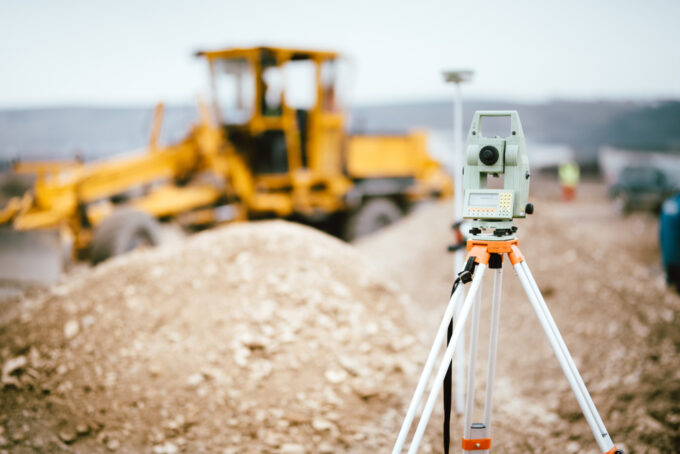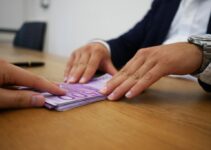Whether you are looking to build an entire skyscraper, improve your business, or even set up a quality Wi-Fi network in your office building – site surveys are the way to go.
To put it simply, a site survey is a process of site or location examination in order to obtain valuable data and information for your upcoming project. Relying on this information is essential if you want to stay on top of all the necessary things for your project, no matter how big or small it may be.
Depending on what your plan or project is, you may have to rely on different surveying methods, processes and techniques, or even completely different types of site surveys to collect all the necessary data for your project, which is precisely what we are going to talk to you about today.
So, without further ado, let’s get into all the different types of site surveys – what they are and when you should use them.
1. Topographic Survey

Source: redhawksurveying.com
One of the most commonly used site surveys is a topographic survey. This particular type is used to locate and identify both natural and man-made topographic features on a piece of land.
If we take a look at the natural topographic features, they usually involve things like elevations and depressions, streams, bodies of water, contours of the land, trees and other types of growth, and so on.
As for the man-made features, a topographic survey would collect data on any man-made structures like walls, fences, buildings, and so on.
Use case scenarios for this type of survey are various, but they’re mostly used in situations when you’re intending on building something on a piece of land, and you need to find out as much as you can about it.
Additionally, a topographic survey is often required by the state or any other legal body in the events of site planning, improvements, or other kinds of development. More often than not, a state or local government would require a survey like this one in order to grant a permit or something along those lines.
2. Wireless Site Survey

Source: omnibroad.com
As you can probably tell by the name, wireless site surveys are done in order to create the most efficient wireless coverage.
If you have a single Wi-Fi router in your home, you’ve probably noticed that the wireless signal is not the same in every room of your home. Some rooms have a much better signal than the others. That is because wireless signal is easily interfered with.
Now, in a residential setting such as your home, an “issue” like this one might not be anything to worry about, but what about a business setting? What if you have a large office space spanning several floors or even an entire building? What about hotels or resorts? There’s no way that they could get by with just a single wireless access point, wouldn’t they?
In situations like those, it is important to conduct a wireless site survey in order to determine the best and most optimal locations for Wi-Fi routers and signal emitters so that every single inch of the space has the maximum possible wireless signal.
As you can probably imagine, plugging a Wi-Fi signal amplifier into a socket in every room won’t help, so you’ll need to rely on precise data collected through site survey in order to properly place routers and access points, run cabling, and so on.
3. Workplace Site Survey

Source: screencloud.com
While we’re on the subject of Wi-Fi and digital site surveys, let’s talk about another site survey type used to improve workplaces and business centres around the world.
Your workplace can be improved in various ways, from streamlining your services through a field service management system or workflow management software to improving huddle rooms and auditoriums and so on. However, none of those can be implemented efficiently without a workplace site survey.
Sirvez, a company specializing in site surveys for schools and business centres, help us gain a better understanding of site surveys such as these ones.
For example, let’s say you’re trying to equip a meeting room with the latest audio-visual equipment or create a high-tech lab in a high school. In order to make sure everything goes smoothly, you have to conduct a survey of the room or even a floor and plan your moves accordingly. Perhaps the space you intended for a conference room isn’t best suited for it because of lousy sound isolation, or perhaps electrical components running through walls create too much interference, prohibiting you from having high-speed wireless internet in the conference room etc.
Getting in front of these potential issues is why you probably need to rely on workplace site surveys.
4. Construction Site Survey

Source: redhawksurveying.com
A construction site survey is probably one of the most familiar site surveys to all of us. However, it is also the one we probably know the least about, considering how many aspects there are to it.
Location survey, or even a boundary survey, is one of the elements of a construction site survey, and it involves obtaining information about a parcel or a piece of land and everything that exists on it.
The boundary survey is pretty self-explanatory, seeing how it is used to locate the exact border of a parcel. This sub-type of the survey is usually required for obtaining permits and other legal documents.
A location survey, on the other hand, would involve getting data of all the things within and outside of the boundaries of a parcel.
Finally, when all of that data is compiled, we can move on to a construction site survey, which is in many ways similar to a topographic site survey, although it does not involve surveying any of the natural topographic features.
As you can probably guess, this type of survey is necessary when undergoing a construction project – regardless of the scale of the project. In other words, it doesn’t matter if you’re building a house or a complex of commercial buildings – a construction site survey is more than necessary.
Conclusion:
Those were the most common types of site surveys. Hopefully, you’ve learned a thing or two about them, and you now know when and if you will be required to conduct any of them.







